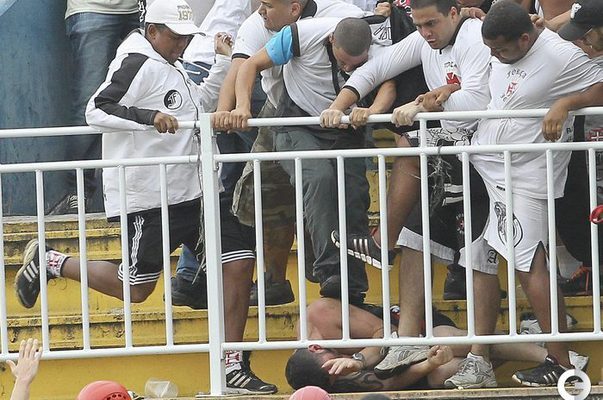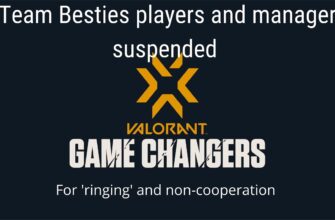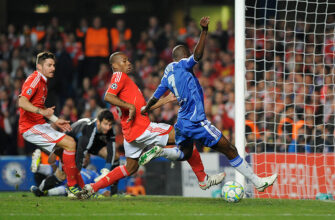The fervent passion for football in Brazil often coexists with a darker reality: persistent and often lethal violence perpetrated by organized fan groups. Recent weeks have once again brought this issue to the forefront, with incidents ranging from intimidating visits to training centers of clubs like Vasco, São Paulo, and Corinthians, to outright violent clashes at Sport`s facilities. This pattern, sadly, is not new. For over forty years, Brazil has grappled with the challenge of taming these groups, and despite numerous attempts, a comprehensive and effective solution remains elusive.
- A Cycle of Reaction, Not Prevention
- A Litany of Failed Endeavors
- Learning from the Global Arena: Different Strategies, Different Outcomes
- England: A Post-Hillsborough Metamorphosis
- Germany: Security Through Engagement
- Argentina: Centralized Control and Biometric Precision
- Brazil`s Path Forward: Beyond Reactive Measures
A Cycle of Reaction, Not Prevention
The scale of the problem is sobering. Since 1988, a grim tally of at least 407 deaths has been attributed to clashes between fan factions. These figures are not just statistics; they represent lives lost and the erosion of what should be a safe space for communal enjoyment. A defining characteristic of Brazil`s approach has been its reactive nature, often termed `legislation under impact.` Policies are typically crafted in haste, in the immediate aftermath of tragedies, lacking the foresight, planning, and long-term continuity essential for genuine change. What Brazil critically lacks is a dedicated national entity to oversee and implement sustained strategies against this endemic violence.
A Litany of Failed Endeavors
Over the decades, authorities across governmental branches have launched a myriad of initiatives aimed at curbing violence both inside and outside stadiums. The disheartening reality is that most have fallen short, often due to a combination of inconsistent enforcement, legal loopholes, lack of integration, and an inability to adapt to the ever-evolving tactics of violent elements. Consider a few prominent examples:
- The Fan Statute (2003): Designed to protect fan rights and ensure event safety, its impact was severely hampered by a lack of effective application.
- Banning Organized Fan Groups from Stadiums: A common punitive measure, yet often circumvented as banned individuals simply attend disguised or form new, unidentifiable groups.
- Fan Registration and Biometric Access: Efforts to map fan group members and use technology like facial recognition have been limited by data integration issues, privacy concerns, high costs, and inconsistent implementation.
- Single-Team Attendance in Classic Matches: While seemingly effective for in-stadium security during high-risk games, it merely displaces conflicts to transit routes, failing to address the root issue.
- Severe Penalties for Violent Fans: Despite legal provisions for imprisonment and fines, widespread impunity and slow judicial processes undermine their deterrent effect.
- Police Training and Specialized Units: Initiatives to better prepare security forces for sports events are often sporadic, lack uniform structure across states, and are not regularly offered.
- Social Media Monitoring and Mass Displacement Controls: While aimed at preventing pre-arranged clashes, these measures struggle against the sheer volume of online activity and a lack of integrated, large-scale implementation across state borders.
- Club Accountability: Punishing clubs for their fans` actions faces resistance and inherent difficulties in managing large, amorphous groups.
- Prohibition of Alcohol and Specific Fan Paraphernalia: These measures are frequently bypassed by clandestine sales or fans simply using common clothes, and are often subject to political and commercial pressures.
- Dialogue and Educational Campaigns: Attempts to foster peace through meetings or public awareness campaigns often suffer from low adherence, a risk of conflict, and a general lack of continuity and institutional support.
The pattern is clear: a fragmented approach, marked by temporary fixes that, much like a leaky bucket, allow the problem to resurface elsewhere, often with renewed vigor. It`s a Sisyphean task where each pushed boulder inevitably rolls back down.
Learning from the Global Arena: Different Strategies, Different Outcomes
While Brazil struggles to find its footing, other nations have demonstrated that containing fan violence is achievable through integrated policies, long-term planning, and collaboration between clubs, state authorities, and civil society. Their successes offer valuable blueprints:
England: A Post-Hillsborough Metamorphosis
In the 1980s, English football was synonymous with hooliganism and tragedy. The horrific Hillsborough disaster in 1989, claiming 97 lives, served as a grim catalyst for change. The response was a radical overhaul: unsafe stadiums were demolished and replaced, the Premier League introduced stringent safety standards, known violent fans were banned, comprehensive CCTV systems with judicial backing were installed, and swift, rigorous penalties were enforced. This transformation was a concerted effort, driven by state policy and strong cooperation among police, the judiciary, and football clubs. It was a firm hand, but one applied systematically and with political resolve.
Germany: Security Through Engagement
Germany`s Bundesliga pursued a different, yet equally effective, path. Their strategy emphasizes safe infrastructure, accessible ticket prices, and continuous dialogue with fan groups. Investment in prevention is key, with specialized teams within clubs mediating conflicts and strong police intelligence monitoring high-risk individuals. The “citizen fan” culture is actively promoted through social initiatives and direct fan involvement in organizational decisions, all while maintaining a firm stance against criminal behavior. It`s a blend of community and control.
Argentina: Centralized Control and Biometric Precision
Argentina, a nation with its own history of violence linked to “barras bravas,” implemented the “Tribuna Segura” program in 2016. This initiative mandates biometric identification for all fans entering stadiums, effectively barring individuals with criminal records or outstanding legal issues. Crucially, Argentina established the Football Security Committee, an official body that centrally coordinates actions between federations, clubs, and police forces – a critical piece of the puzzle still missing in Brazil.
Brazil`s Path Forward: Beyond Reactive Measures
Four decades of fragmented attempts underscore a fundamental truth: Brazil`s approach to football fan violence is structurally flawed. The absence of a unified national policy, a dedicated coordinating body, and sustained investment in prevention and enforcement means the problem will continue to fester. Until there is genuine political will, robust coordination between public and private entities, and a proactive engagement with fan culture that fosters peace rather than merely reacting to violence, Brazilian football will remain susceptible to a cycle of temporary fixes and renewed chaos. The beautiful game deserves a safer stage, one built on foresight, collaboration, and unwavering commitment to long-term solutions, not just crisis management.









